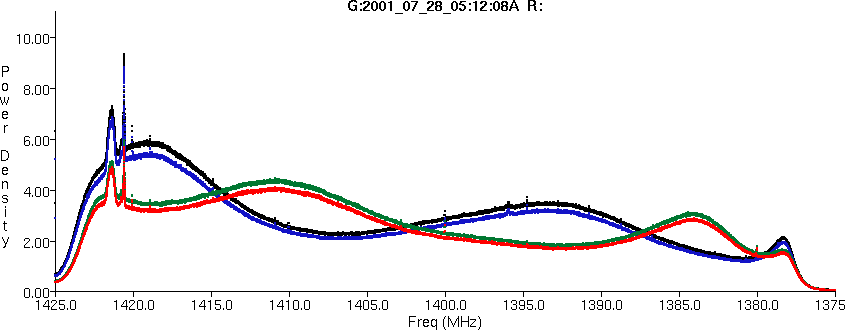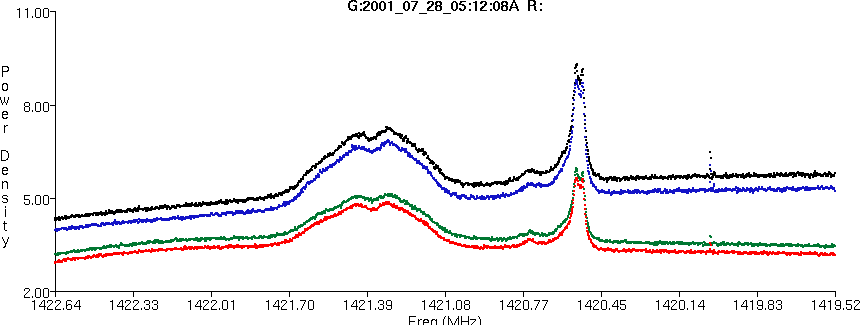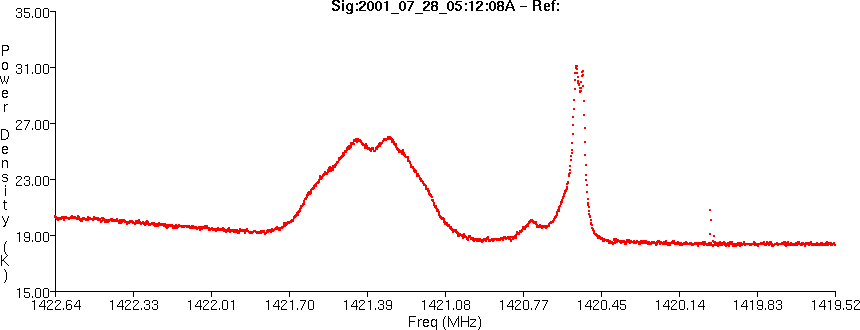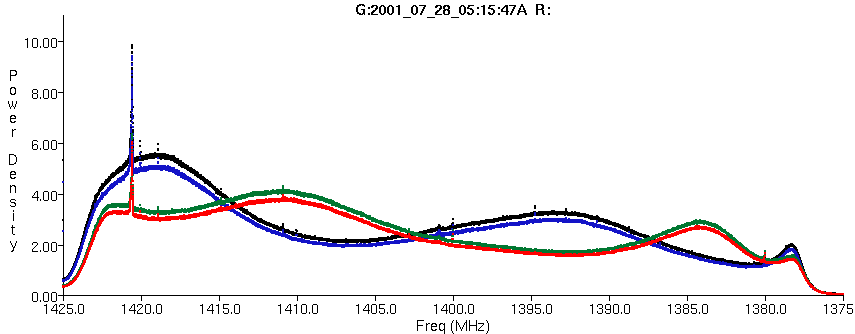| Image | Band | Note |
| Type | |

| 1.4 GHz |
01 July 27
The image at left shows four raw spectra from an observation of Messier 33
with the GBT. The X axis shows the channel number of a 32767 channel
spectrum covering the frequency range 1425 to 1375 MHz. The Y axis
is intensity in counts.
The green and red spectra show the Y linear polarization of M33 with
Cal On and Off, respectively.
The blue and black spectra show the X linear polarization of M33
with Cal On and Off, respectively.
The broad feature near 1421 MHz is M33, and the narrower
feature near 1420.4 MHz is the Milky Way.
The complete raw engineering
FITS files are
in directory /home/gbtdata/wtifft.
|

| 1.42 GHz |
01 July 27
The image at left zooms in on the frequency range containing M33 and
our galaxy.
The X axis shows the channel number of a 32767 channel
spectrum covering the frequency range 1425 to 1375 MHz. The Y axis
is intensity in counts.
The green and red spectra show the Y linear polarization of M33 with
Cal On and Off, respectively.
The blue and black spectra show the X linear polarization of M33
with Cal On and Off, respectively.
The broad feature near 1421 MHz is M33, and the narrower
feature near 1420.4 MHz is the Milky Way.
|

| 1.42 GHz |
01 July 27
The image at left shows a calibrated observation of Messier 33
with the GBT. The X axis shows the channel number of a 32767 channel
spectrum covering the frequency range 1425 to 1375 MHz. The Y axis
is intensity (Kelvins).
The spectrum is the average of the X and Y polarization signals.
The complete raw engineering
FITS files are
in directory /home/gbtdata/wtifft.
The Tifft
format ascii data file is online.
|

| 1.42 GHz |
01 July 27
The image at left shows the OFF-Messier 33 spectra.
with the GBT. The X axis shows the channel number of a 32767 channel
spectrum covering the frequency range 1425 to 1375 MHz. The Y axis
is intensity (Kelvins).
The antenna is pointed a few degrees from the M33.
The
Tifft
format ascii data file is online.
|



